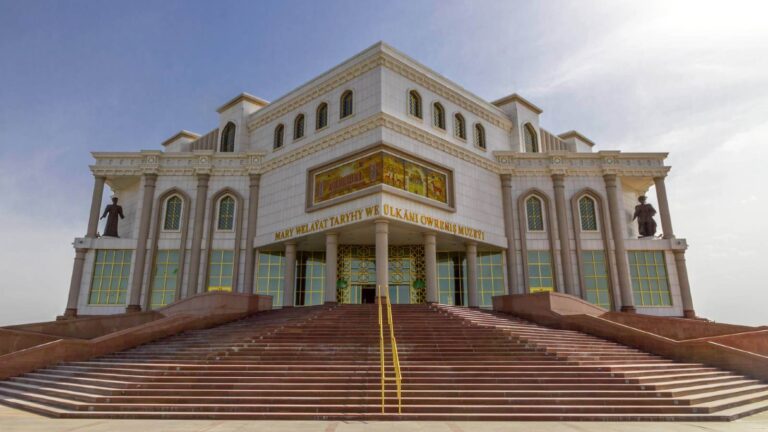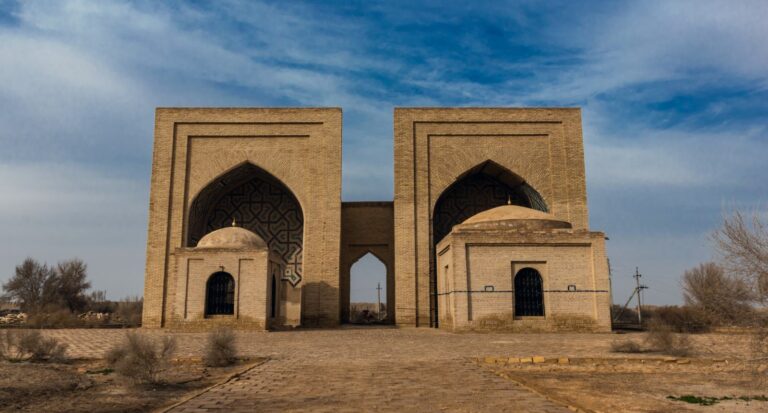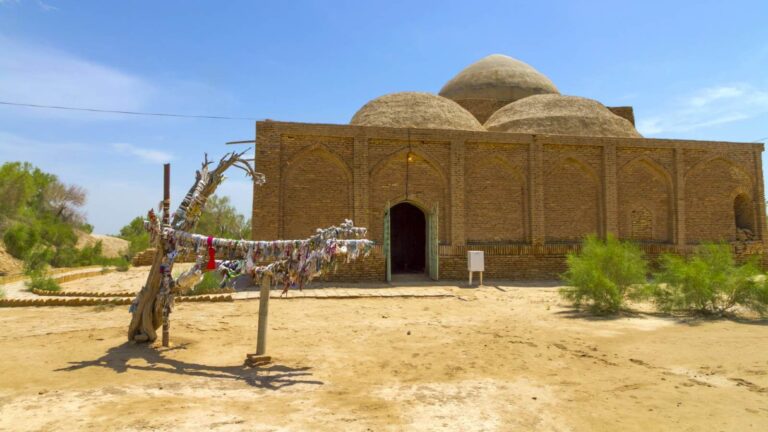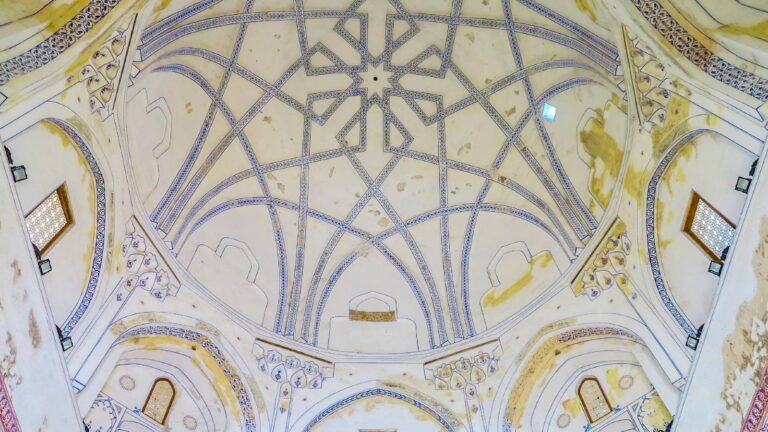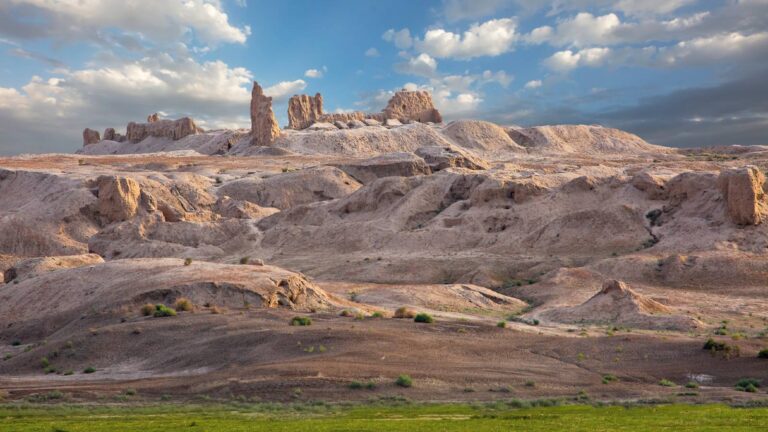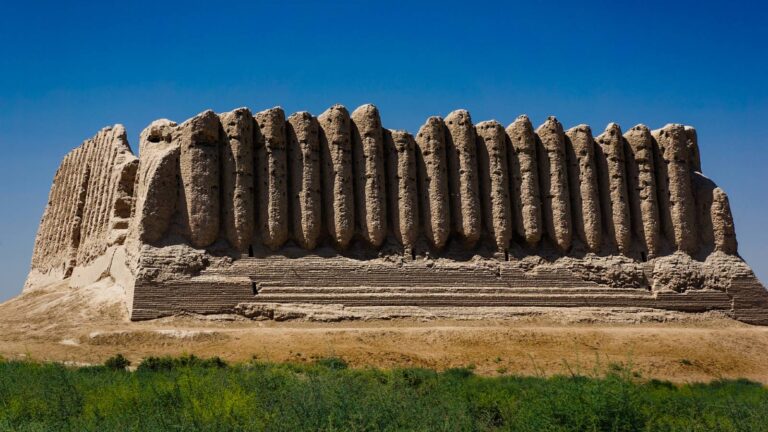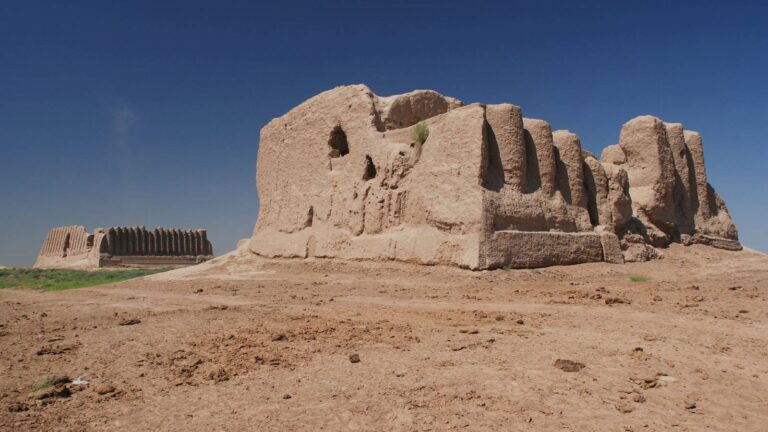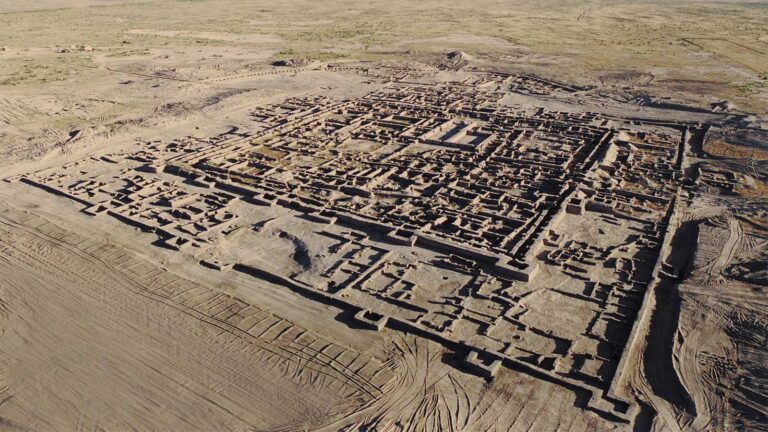Getting There
Driving is a convenient way to reach Merv. From Ashgabat, take the M37 highway towards Mary. The drive takes around three to four hours, covering a distance of approximately 310km. This option allows you to have flexibility and explore the site at your own pace.
Regular bus services operate between Ashgabat and Mary. Buses depart from the main bus stations in both cities and take approximately four to five hours to reach Mary. From there, you can hire a taxi or take a local bus to Merv, which is located about 30km east of Mary.
Trains run daily from Ashgabat to Mary and the journey takes six to seven hours.
What to Expect
As you explore this archaeological site, expect to be transported back in time to the Medieval era and witness the remnants of a once-grand fortress.
From the top, you can appreciate the vastness of the archaeological site and the expansive landscapes beyond. Take the time to wander across the ancient walls, marveling at their impressive construction and imagining the lives of those who inhabited this historic site. The sheer scale of Sultan Kala is awe-inspiring, and you can expect to encounter a vast complex with multiple sections and structures.
Within Sultan Kala stands the Sultan Sanjar Mausoleum. Dedicated to Sultan Sanjar, a powerful Seljuk ruler who reigned over the region during the 11th and 12th centuries, the mausoleum is renowned for its stunning architectural design. It features a unique octagonal shape with a cylindrical drum and a conical roof adorned with intricate brickwork patterns and decorative motifs.
Inside the mausoleum, you can find the burial chamber of Sultan Sanjar. Although the interior is relatively simple, it exudes a sense of grandeur and solemnity. The walls are adorned with inscriptions and ornamental designs that reflect the craftsmanship of the period.
History
The history of Merv dates back to the 3rd millennium BCE, with evidence of settlement in the area during the Bronze Age. It flourished as an urban centre and trading hub along the Silk Road from the 6th century BCE onwards, coming under Persian rule during the Achaemenid Empire and later the Parthian Empire.
In the 7th century, Merv was conquered by the Arab Muslim armies during the Islamic expansion. It became a prominent city within the Islamic world and served as the capital of the Abbasid province of Khorasan.
Merv experienced a period of prosperity under the Seljuk Turks in the 11th century. It became a thriving centre of trade, art, and education. Later, it came under the control of the Khwarezmian Empire, which further elevated its status.
In 1221, Merv faced destruction during the Mongol invasion led by Genghis Khan. The city was devastated, and its population decimated. Many of its magnificent structures were destroyed, marking the beginning of Merv’s decline.
Merv experienced a revival under the Timurid dynasty in the 14th century.
The city gradually declined in the following centuries, facing further destruction due to invasions, wars, and natural disasters. The city was eventually abandoned, and its ruins were buried under layers of sand until rediscovered by archaeologists in the 19th century.


